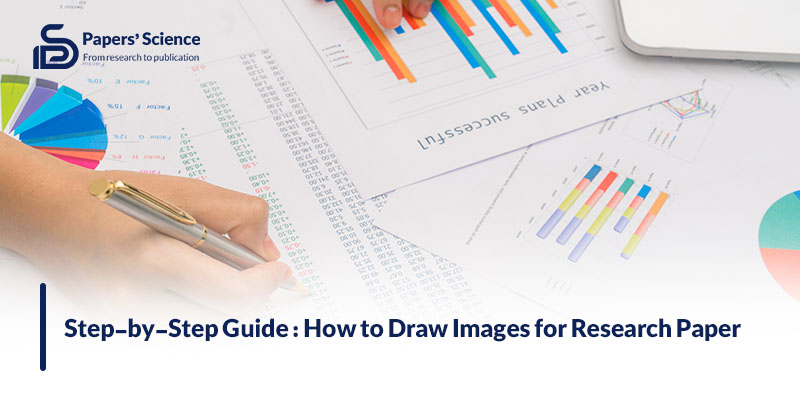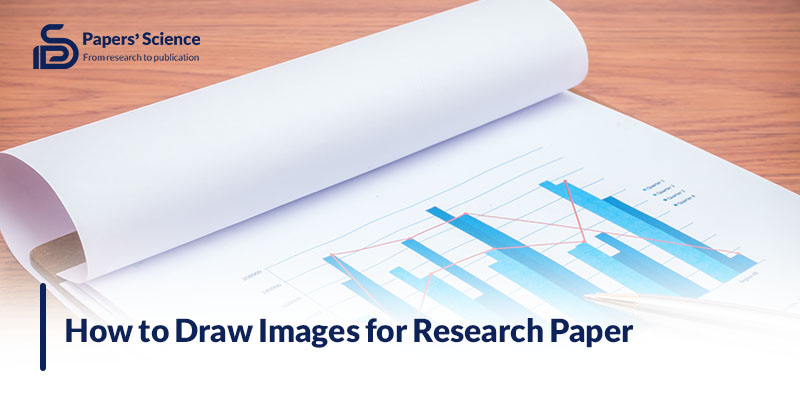How to Draw Images for Research Paper: A Beginner’s Guide

As you know, research papers are based on data and findings, which is the main part of the paper and should be highlighted using different methods, and one of these methods is using graphs, figures, tables, and charts.
Using these items in the research paper is important since it can help the reader understand the data better and find by looking into them.
If you are writing a research paper and looking for a way to make the most of your data, consider creating images, figures, graphs, and any visual content relevant to your paper.
But if you don’t know how you can do it, don’t worry. This article will guide a beginner in drawing images for research papers.
Why adding figures to research papers is important?
Adding figures to research papers is more than adding visually appealing to the papers by using different colors, backgrounds, styles, and more.
The main benefit of using figures in an article is helping you better clarify your finding.
Readers will likely be more engaged in your research papers as they better understand your data and finding.
And finally, having papers with high-quality figures, graphs, etc., and clarified data improves the chance of publishing in a high-rank journal.
Because journal values those articles that put time and energy into creating images and figures professionally.
How to create high-quality figures for research papers?

To draw images for research papers, you must consider some tips to ensure that your time and energy are worth it. Here are tips:
- Plan your image
Before starting to draw an image, you should analyze your data and determine the purpose of your image, and know what message it will convey and the best way to do it.
In other words, which type of image best fit your data?
For instance, if your data consists of numerical values and trends, a line graph or a bar chart might be suitable to illustrate the relationships and patterns.
These images display changes over time or compare different categories more effectively.
- Input details for figures
As your research paper will be published in scientific journals and your audience can vary from first-year students to professors, it is important to include all relevant details about the figures. This will help the audience understand the figures and avoid any misunderstandings.
These details can include steps, the number of samples, dates, and other relevant information. You should provide enough information so readers can grasp the main points without reading the entire article by simply looking at the figures.
- Add captions for figures.
A brief description below the figure should be noted. As you mention in the article the number of figures, you should write the number of figs in the caption section allowing the reader to detect which figure do you talking about. - Check the default settings of tools.
Suppose you are using tools for drawing images. In that case, you should check their default settings to ensure that the data included in the image is correct since the tool may manipulate your data to fit the size, font, and style of the image, which can affect the accuracy of your information.
Before choosing a default figure for your data, ensure that these graphs or plots fit your data and do not remove any important content from the figure.
Use right colors
You can apply different colors to add some eye-catching details to the figure. But you need to choose a color that increases the clarity of the information.
And you also can highlight important parts of the figure with distinctive colors to emphasize it more.
- Choose the right tool for drawing an image.
Although many tools can help you draw images for research papers, they are different in features, and you need to choose the one that best aligns with your finding.
Here is a list of some of these tools that you can use to draw images:
· R is a programming language used for statistical computing and creating graphs. It provides a wide range of statistical analyzing techniques such as linear, nonlinear, time-series analysis, clustering, and classification.
· TikZ and PGF are packages of TeX used for creating graphics. You can make complex graphics using this tool and its well-developed features.
· Inkscape is one of the best tools for editing vector graphics. The cool thing about this tool is that it can draw complex figures. For instance, you can enhance a figure created by a script or extract and modify figures from a PDF file.

Read More: Which is better endnote or mendeley?
Let’s recap
Adding images to the research papers is rewarding since it can better clarify your paper’s concept.
To make images in research papers more effective, you need to consider some tips while you want to create one.
We introduce you to tips for drawing images for your paper. In addition to these tips, we discover some tools to help create figures.
Hope you find this article helpful and publish your paper in one of the highly impacted factor journals.
Do you know another tool helping you to draw images for research papers? If yes, please tell us in the comment section.

Have you found these tips helpful for drawing images for your research paper? Leave your comment for us.



